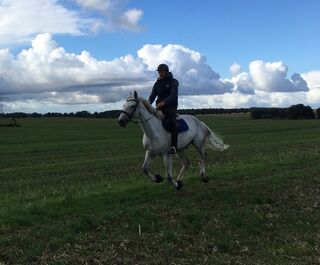Friends
Why Did Humans Domesticate Dogs?
What we know about becoming man’s best friend.
Posted December 23, 2021 Reviewed by Vanessa Lancaster
Key points
- The grey wolf is the ancestor of the domestic dog.
- Dogs were domesticated earlier than any other animal.
- When, where, and how dogs were domesticated are still highly debated in archeology and genetics.
A while ago, on a warm summer evening in Northern Poland, I went into the forest with my dog. I walked for a while on forest trails and didn't realize that the sun had set. Eventually, I had to admit that I was lost.
I was a bit scared, as the forest was endless. I was relieved when my dog put her nose down and indicated where she wanted to go. She smelled that we had been there before and guided us for 30 minutes directly to our vacation home.
Dog Domestication
This memorable experience reminded me of the key questions about how humans and dogs came together: when, where, and how dogs were domesticated. There is no doubt that gray wolves were the ancestors of dogs. One controversial question is about the timing.
Some authors claim that dogs were already domesticated about 30 to 40.000 years ago, while others doubt that. There is general agreement that it was at least 14.000 years ago, and that dogs were the first domesticated animals.
The location where dogs were domesticated is also still highly debated. Asia is a likely candidate (Thalmann & Perri, 2018).
There are multiple theories on how domestication started. Perhaps it was initiated by humans, as hunters brought wolf pups into the camp, or perhaps wolves approached human camps to feed on discarded food scraps (Kaminski & Marshall-Pescini, 2014).
However, one of the most overlooked question is: Why were dogs domesticated? Be it 14.000 or 40.000 years ago: we were still hunters and gatherers. So why did we make friends with these animals that were actually competitors to us as they hunted the same prey? The answer isn’t simple, as domestication is a complicated evolutionary and cultural process that leads to a symbiotic relationship (Zeder, 2012). We would expect advantages for both species – humans and the wolves that evolved into domesticated dogs.
Advantages for Both Sides
Dogs not only gained a new food resource in the immediate vicinity of human camp sites but were also protected from predators. But what was the initial advantage for humans to domesticate wolves? Humans might have taken advantage of dogs' attentiveness and hunting abilities. Early dogs probably cleared camps of garbage and vermin and were used as a source of meat, heat, and a means of transportation (Miklosi, 2007; Paxton, 2000; Serpell, 2016).

A valuable wolf trait taken advantage of was probably their excellent sense of smell and ability to perceive predators earlier than humans. When the bond between the two species strengthened, the sensitive nose of dogs may have been beneficial in joint hunting (Ruusila & Pesonen 2004).
A dog's sense of smell and its usefulness to humans is probably difficult to quantify, but it might be equal to the use of strength in the horses to carry goods and people (Gaunitz et al., 2018).
On that dark summer evening in the Polish forest, I experienced first-hand the great advantage of utilizing my dog’s nose. I was odor-blind but could use the sense of smell of my best friend.
References
Gaunitz, C., Fages, A., Hanghøj, K., Albrechtsen, A., Khan, N., Schubert, M., . . . Orlando, L. (2018). Ancient genomes revisit the ancestry of domestic and Przewalski’s horses. Science. doi:10.1126/science.aao3297
Kaminski, J., & Marshall-Pescini, S. (2014). The social dog: Behaviour and cognition Elsevier publishers.
Miklosi, A. (2007). Dog Behaviour, Evolution, and Cognition (1st ed.). Oxford: Oxford University Press
Paxton, D. W. (2000). A Case for a Naturalistic Perspective. Anthrozoös, 13(1), 5-8. doi:10.2752/089279300786999996
Ruusila, V., & Pesonen, M. (2004). Interspecific Cooperation in Human (Homo sapiens) hunting: the benefits of a barking dog (Canis familiaris). Annual Zoological Fennici, 41, 545-549.
Serpell, J. (2016). The domestic dog: Its evolution, behaviour and interactions with people (2nd ed.). Cambridge: Cambridge University Press.
Thalmann, O., & Perri, A. (2018). Paleogenomic Inferences of Dog Domestication. In C. Lindqvist & O. P. E. Rajora (Eds.), Paleogenomics, Population Genomics (pp. 273–306): Springer International Publishing AG.
Zeder, M. A. (2012). Pathways to Animal Domestication. In A. B. Damania, C. O. Qualset, P. E. McGuire, P. Gepts, R. L. Bettinger, S. B. Brush, & T. R. Famula (Eds.), Biodiversity in Agriculture: Domestication, Evolution, and Sustainability (pp. 227-259). Cambridge: Cambridge University Press.


